The North Aegean Islands: Unmatched Heavenly Destinations
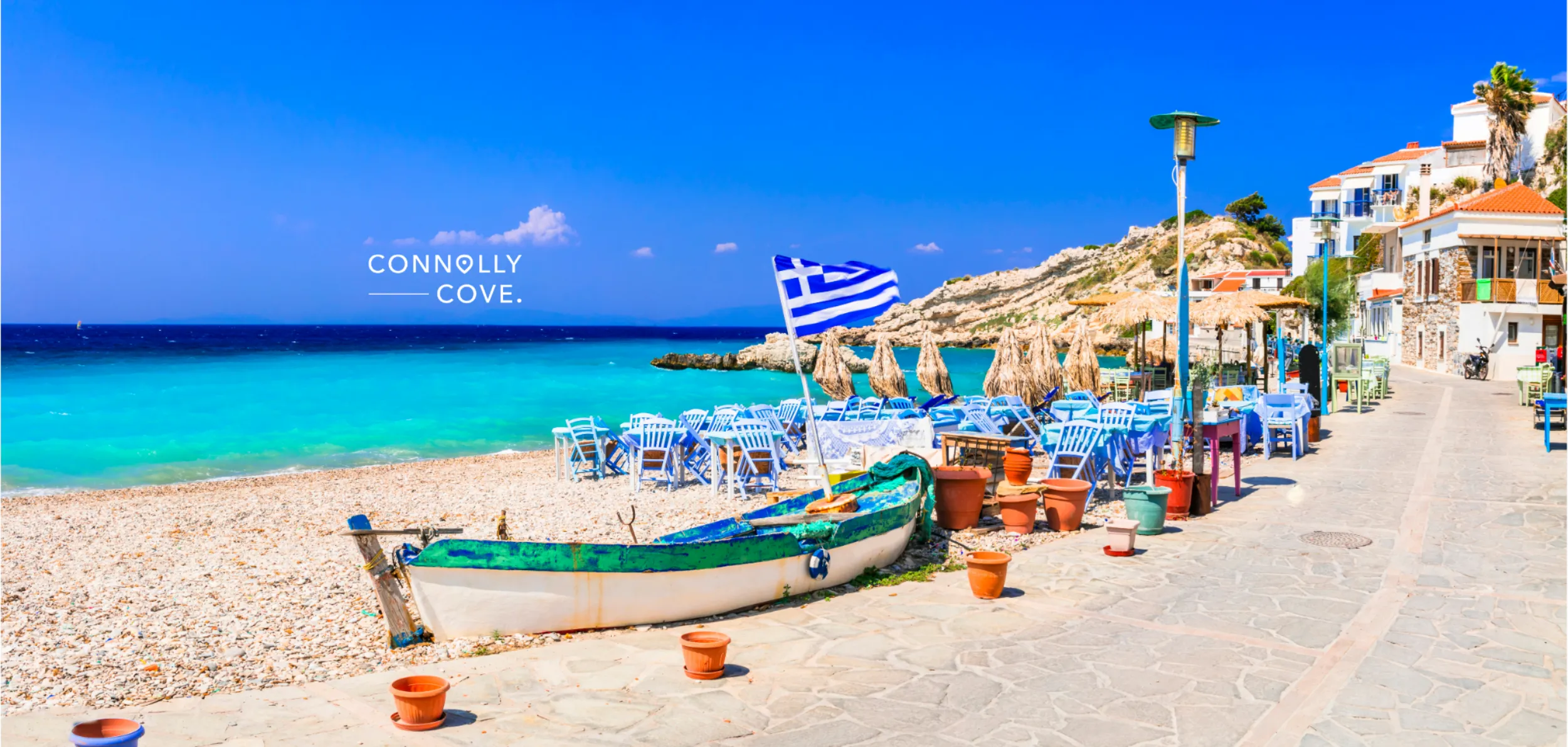
Updated On: March 21, 2024 by Aya Radwan
Are you thinking of travelling to Greece as your next holiday destination, but you’re on the lookout for new places to tread? Can we suggest between Greece and Turkey the North Aegean Islands in the North Aegean Sea? These unusual islands boast the same magic and wonder as other Greek islands, such as Santorini. However, the North Aegean Islands are far from Santorini, closer to Create than Turkey.
In this article, let’s familiarise ourselves with these beautiful islands, learn a bit about their history and how they came to be divided as such, and conclude with some of the greatest places and wonders to visit there.
The North Aegean Islands: The History Shot
Man has attempted to settle in the North Aegean Islands since the Mesolithic Age, and the archipelago, with its scattered islands, began to develop the first-ever culture and civilisation in the area. Inhabitants of the different islands depended on trade, common interest and hardship to strengthen their relations. By 5000 BC, nearly all the islands had their permanent settlers, who worked on the continuous development of their home island. Cities in Lemnos, Samos and Chios represented the pioneers in local culture, with trade ties pushing the local cultures to their peak by 3,000 BC.
A thousand years later, powerful families started to arrive at the islands and settle there completely. Such families include The Ionians, who installed themselves in Chios and The Aioleis, who arrived and settled in Lesvos. These new families began arriving by 2000 BC, followed by the 12th and 11th centuries BC. Since then, and until the 5th century BC, the islands enjoyed the peak of their cultural, artistic and commercial life.
From then until the 13th century, the islands were continuously conquered by foreign forces. The ruling cycle started with the Persians in the 5th century BC, followed by the Greeks, the Spartans, the Macedonians, the Egyptians and the Romans. In the 13th century, the islands were divided under the rule of the Franks, the Venetians and the Genoese. Under Ottoman rule, the islands lost the prosperity they once enjoyed through the previous centuries, and it wasn’t until the 16th century that the light began to shine on the islands again.
In modern history, the islands were actively involved in every movement with the goal of Greece‘s independence, such as the Greek War of Independence. It wasn’t until major European powers believed in the Greek cause in the 19th century that the islands, along with mother Greece took the first step to actual independence. The islands were the last to join Greece as one state in the first quarter of the 20th century, after the First Balkan War.
Since the majority of the North Aegean Islands are Greek, we’re taking you on a trip through their most popular paradise-like natural wonders and historical landmarks.
The Best Time to Visit The North Aegean Islands
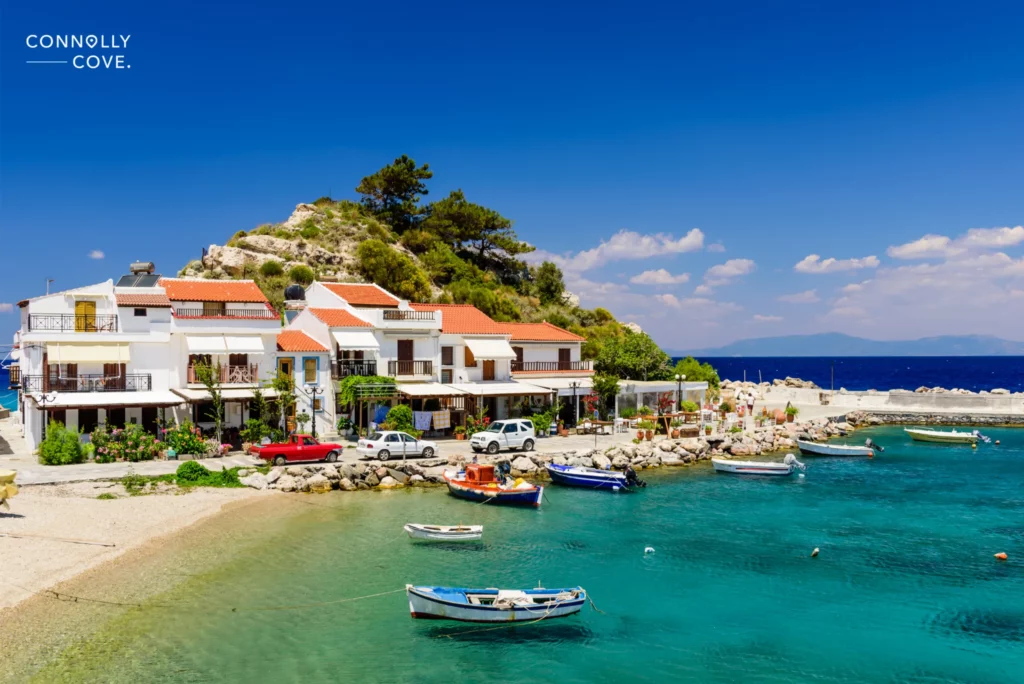
Meteorologically, the North Aegean Islands are divided into two sets of islands. The islands in the Thracian Sea, which is in the far north of the Aegean Sea, and the islands of the east, also known as the Northeast Aegean Islands. The weather on the islands, in general, is hot during the summer and cold during the winter, with the possibility of rain, snow and even frost.
These are the characteristics of a transitional Mediterranean climate. Degrees mid-winter can be 10° max, and mid-summer can reach 30°. You can expect a lot of rain during the wet season, but some thunderstorms might drop during summer due to the islands’ proximity to the mainland. However, you can always expect seawater to be warm and welcoming during summer.
The Northeast Aegean Islands have warmer winters and longer summers. Average temperatures in winter can be 12° and 33° in summer. This, however, contradicts the cold seawater, which is a bit cooler than that of the Thracian Sea islands. The warm seawater is due to northern cool winds known as Meltemi, which constantly fold with the water surface, preventing it from getting warmer. The best time to visit the Thracian Sea islands of the North Aegean Islands is during the summer seasons, from June through August, which extends to from June to mid-September for the remaining islands.
The North Aegean Islands: A Wondrous Trip Around The Islands
The islandss cultural and historical heritage is shown in their numerous landmarks. To add to their beautifully crafted attractions, nature has blessed the North Aegean Islands with untouched beaches, rarely trodden by man or corrupted by overuse.
Potami Waterfalls, Samos
The Potami Waterfalls in the Potami region of Samos are also known as Karlovasi Waterfalls. There are two magnificent waterfalls at Potami, which are relatively easy to reach. When you follow the path leading to the waterfalls, you will meet the smallest of them first; then as you proceed forward, you will reach the second one. A great spot for relaxation, a nice dip and calming surroundings, the waterfalls began to build a reputation among tourists. Nearby, you can find the Potami Beach, close to the town’s harbour.
Tsamadou Beach, Samos
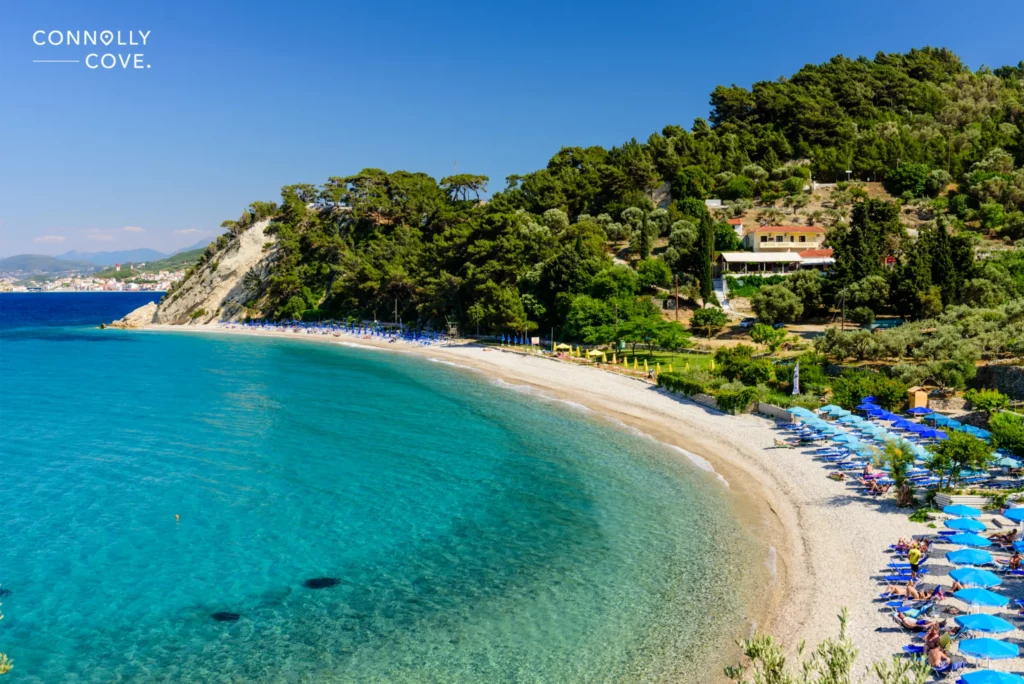
The path leading to Tsamadou Beach in Kokkari, in Samos, is a green paradise. The contrast between the beautiful greenery and crystal-clear seawater makes the beach one of the most popular on the island. Watch your steps as you descend from the main road to the path leading to the beach; you should find the road even afterwards.
Monastery of Panagia Spiliani, Samos
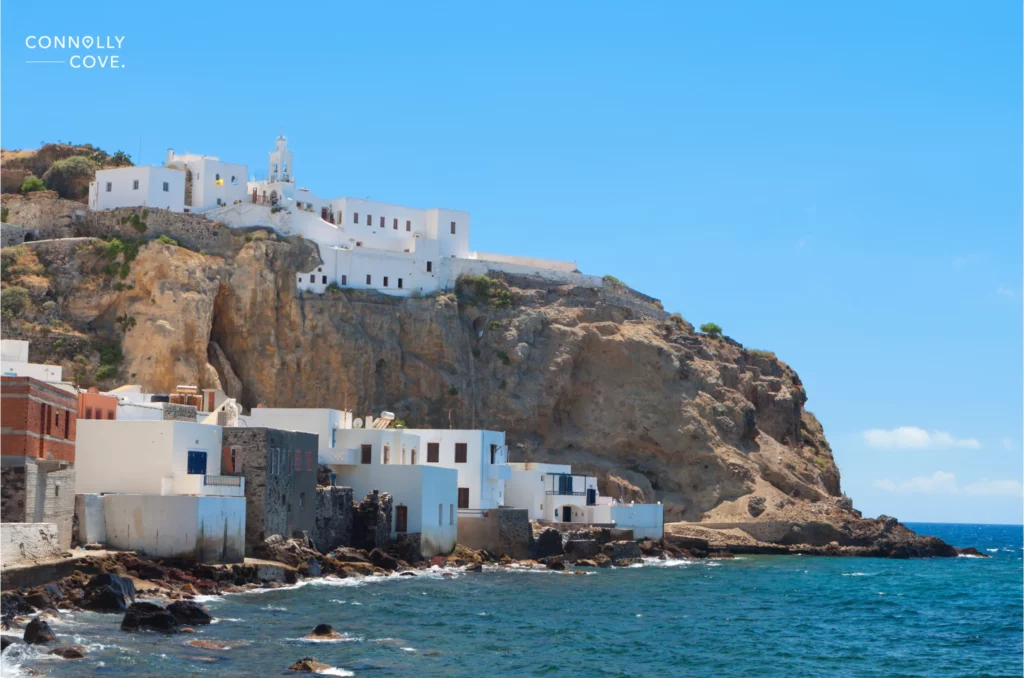
Monastery of Panagia Spiliani, or Monastery of the Blessed Virgin Mary, is an incredible cave church in Pythagorion. The recently discovered church, only in 1952, has been a place of worship since the dawn of time. A true miraculous place of worship with water gushing out of the ground, the church’s representation of the Virgin Mary also tells a miraculous story. When thieves attempted to steal the statue, divine intervention came through, and the statue split in two in objection and sank into the sea. Later, locals suddenly found the statue by the beach. The small chapel by the cave is dedicated to Saint George.
Pappa Beach, Samos
Fall in love with gradient-coloured seawater at Pappa Beach. The magnificent beach in Ireon, Samos, provides you with amazing views of the island, hospitable facilities, a restaurant and a refreshing beach bar. It’s true the beach is a pebbly one; it just means you might need water shoes to get around. Everyone at the on-site facilities is friendly and will help you get around if anything proves difficult. All you need to do is just enjoy the beautiful sun and magnificent weather.
Seychelles Beach, Ikaria
Seychelles Beach, near Mangganitis, is a hidden beach in Ikaria. Accessible through a steep descending path from the main road, the locals at Mangganitis kept this little gem hidden for years to keep it untouched. Even with increasing tourist flow to the North Aegean Islands, this beautiful beach remains a secret to many visitors. The pebbly beach compliments the wondrous rock formations at the beach, and the nearby tavern and bar provide snacks and refreshments.
The Chios Mastic Museum, Chios
The Chios Mastic Museum is an unusual one; as the name reveals, it showcases the history of mastic, its plantation, cultivation and use in various industries. Mastic has a very unique smell and texture; the amazing taste and flavour it brings to cooking resembles no other spice. The museum’s exhibitions include the history of the mastic tree as a native of Chios, its resin and the effect of the product on the island’s prosperity. Through interactive exhibitions and documents, the museum takes visitors to the modern tools at work to best benefit from the aromatic plant. After you go through the museum, you can see real mastic trees and examine their resin for yourself.
Mavra Volia Beach, Emporios, Chios
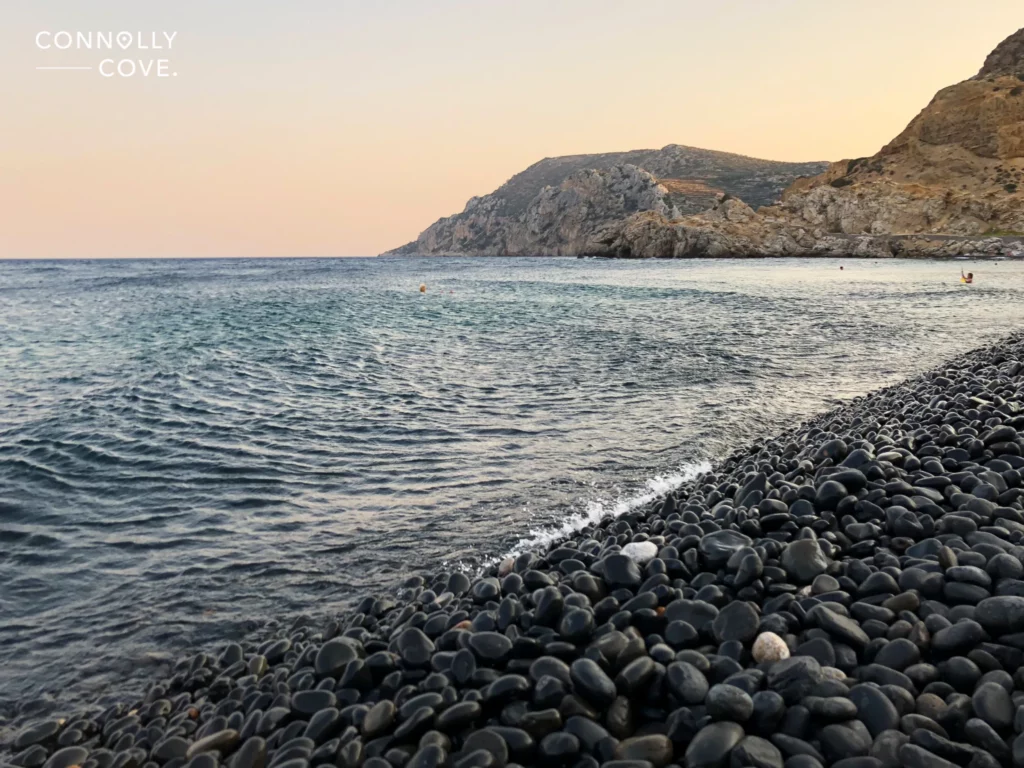
The dark-pebble beach of Mavra Volia in Emporios gives visitors an incredible lifetime experience. Once an active volcanic spot, over the years, the volcano has become dormant, and only the black pebbles continue to tell the story. The dark blue water matches the dark, pebbly beach, which draws an outstanding portrait of nature and beauty, along with the surrounding high hills. There are all the services you can think of a few feet away, even with available lodging for the day.
Nea Moni Monastery, Chios Town, Chios
This UNESCO World Heritage Site monastery is an incredible 11th-century work of art. In the mid-11th century, the islands were under Byzantine rule, and the Byzantine Emperor Constantine IX Monomachos ordered the construction of the monastery. Built after a miraculous sighting of the Virgin Mary’s icon by three monks and the prophecy of Constantine’s ascension to the throne of Constantinople, the monastery suffered great damage under Ottoman rule and a following earthquake. Although much of its original mosaics and artwork were damaged, you can still marvel at its standing beauty.
Molyvos Castle, Molyvos, Lesbos
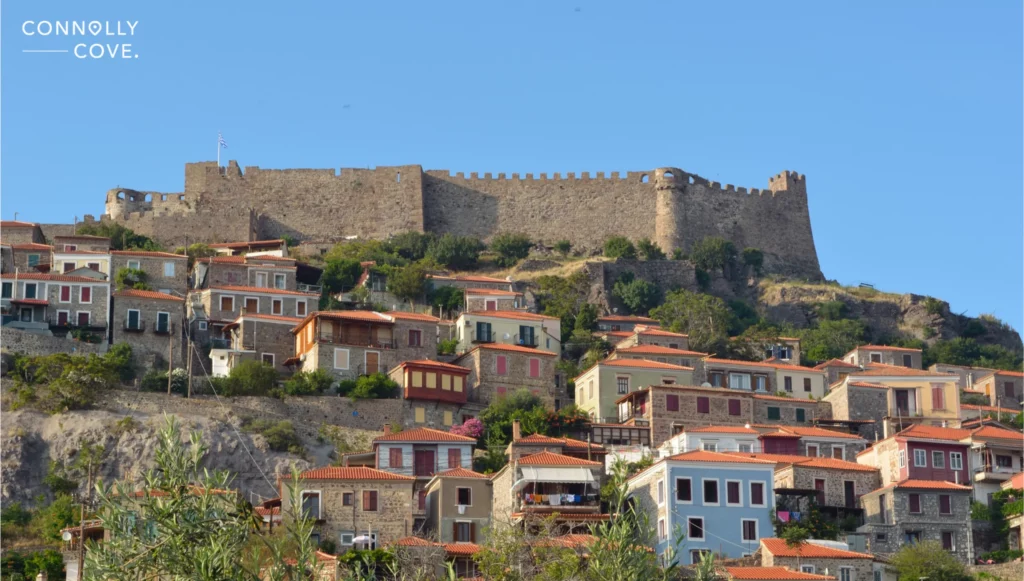
Make your way up the road to Molyvos Castle and tread its uneven cobbled floors. This mighty castle overlooking the town gives an impressive view of the area, and you can even see Turkey on the horizon. The Byzantines built the castle on the old town’s acropolis in the last quarter of the 14th century. The Genoese and the Ottomans carried out extensive repairs of the damaged parts and added new ones. All these architectural periods are still visible between the castle’s folds today.
The Commander of Lesbos Monastery, Montamados, Lesbos
Archangel Michael, after whom the monastery is named, is Lesbos’ archangel. The monastery tells an ancient story of bravery and sacrifice; when Saracen pirates raided the island and monastery in the 10th and 11th centuries, they took everything. On one raid, the pirates attacked the monastery and killed everyone, but unfortunately, one had escaped. The Archangel Michael appeared to defend the monk against the pirates, who fled in fear. The surviving monk, Gabriel, mixed the blood of his brethren with clay to recreate Michael’s image and it is this image that still stands in the monastery today.
Agios Efstratios, Lemnos
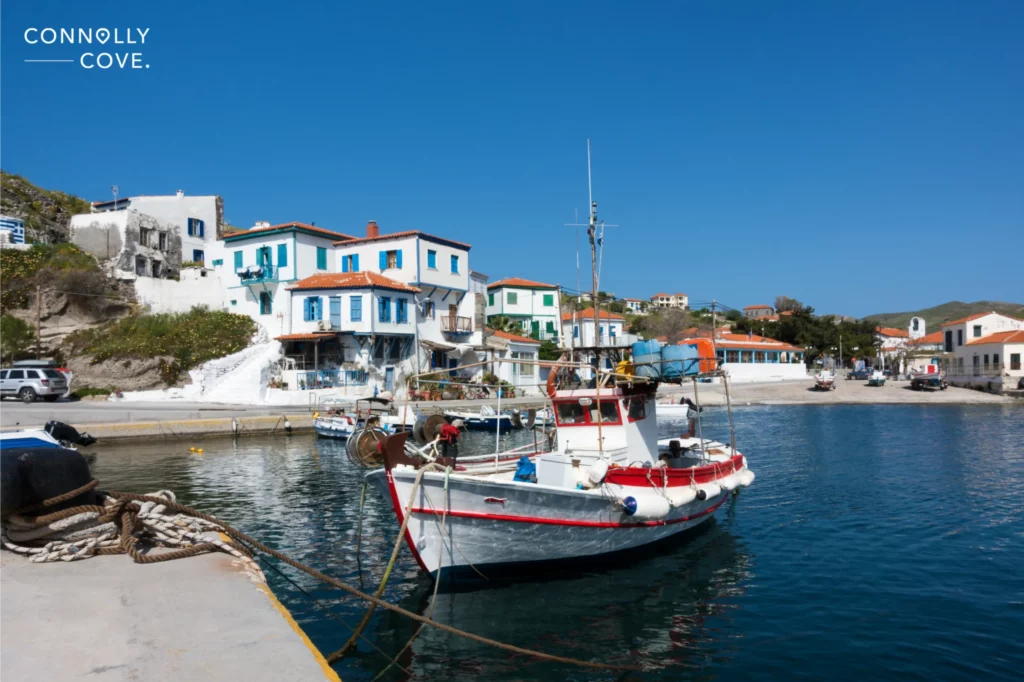
Surrounded by its sister islands, Lemnos and Lesbos, Agios Efstratios is a magnificent little retreat outside of Lemnos. The small island allows tourists to explore it in just one day. You can visit any of the town’s beautiful beaches, such as Agios Antonios and Lemonies. Under Byzantine rule, an opposing monk, Saint Efstratios, was exiled for opposing the emperor, and the island got its name from him. Since the medieval period and the island has been a place of exile, even in the 20th century. Agios Efstratios is an untouched fishing village which gives you an incredible experience away from busy tourist islands in the area.
Golden Beach, Thasos
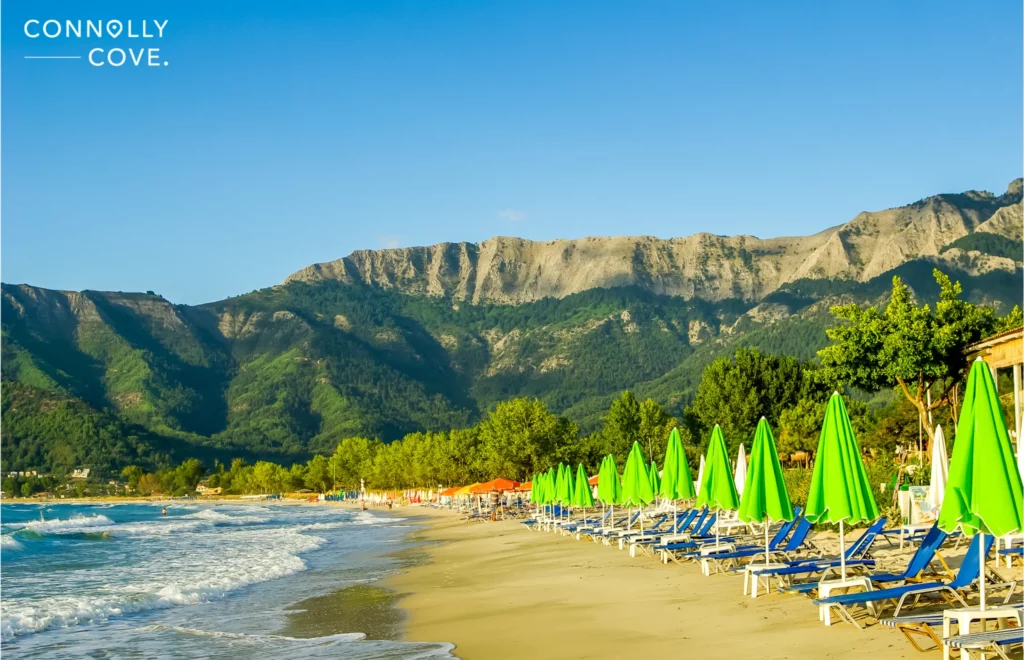
Chrisi Akti, or the Golden Beach, in Skala Potamia, is one of Thasos’ most incredible beaches. A true golden beach, the sand lining the coast reflects the warming Mediterranean sun to give you the best beach experience. Ideal for all water activities, when you visit the area, make sure to check its other beaches, such as Skala Panagia. All necessary facilities are around the beach to ensure you enjoy your holiday.
Archaeological Museum of Thasos, Limenas, Thasos
The main museum in Thasos retells the island’s history since it was first occupied from the Neolithic period up to the Roman rule of the North Aegean Islands. While the artefacts in the museum are ancient, the house that holds them is from the 1930s. In addition to sculptures from the Neolithic period, there are artefacts from the Archaic period, the Classical period and the Roman and Hellenistic period. In the museum, besides the exhibition rooms, there’s a local shop.
Kappa Art Gallery, Potos, Thasos
Marvel at the local Greek art forms by artists from all sides of the spectrum. At Kappa Art Gallery, you will find paintings, sculptures, figures, jewellery, pottery, ceramics and construction figures. The art gallery showcases incredible works by famous and upcoming artists alike to encourage the artistic and cultural scene in Greece. You can also buy unique souvenirs from the museum’s shop to remind you of your experience.
The North Aegean Islands of Greece have more attractions and experiences for you to dive in. All you’ve got to do is come over!






